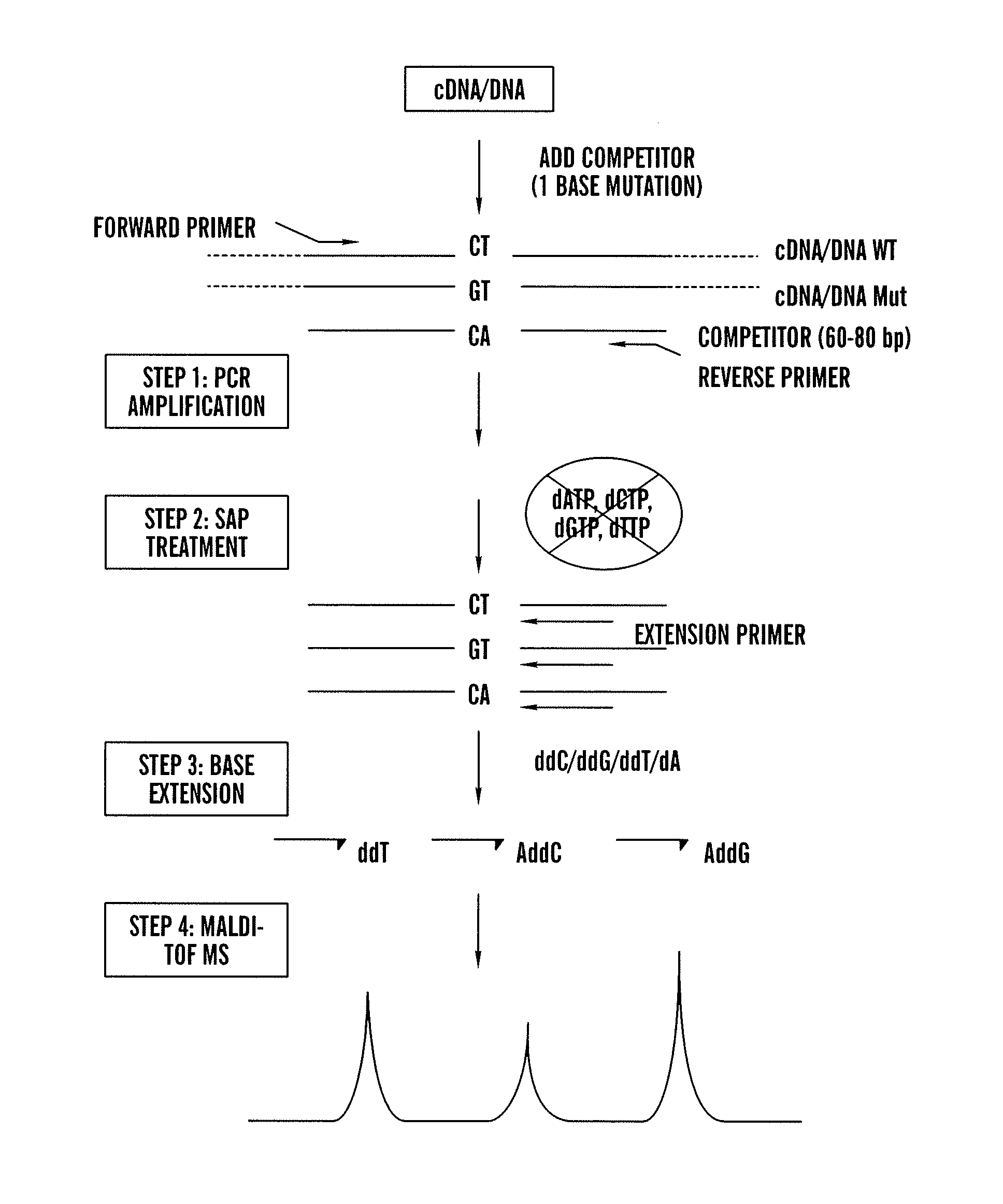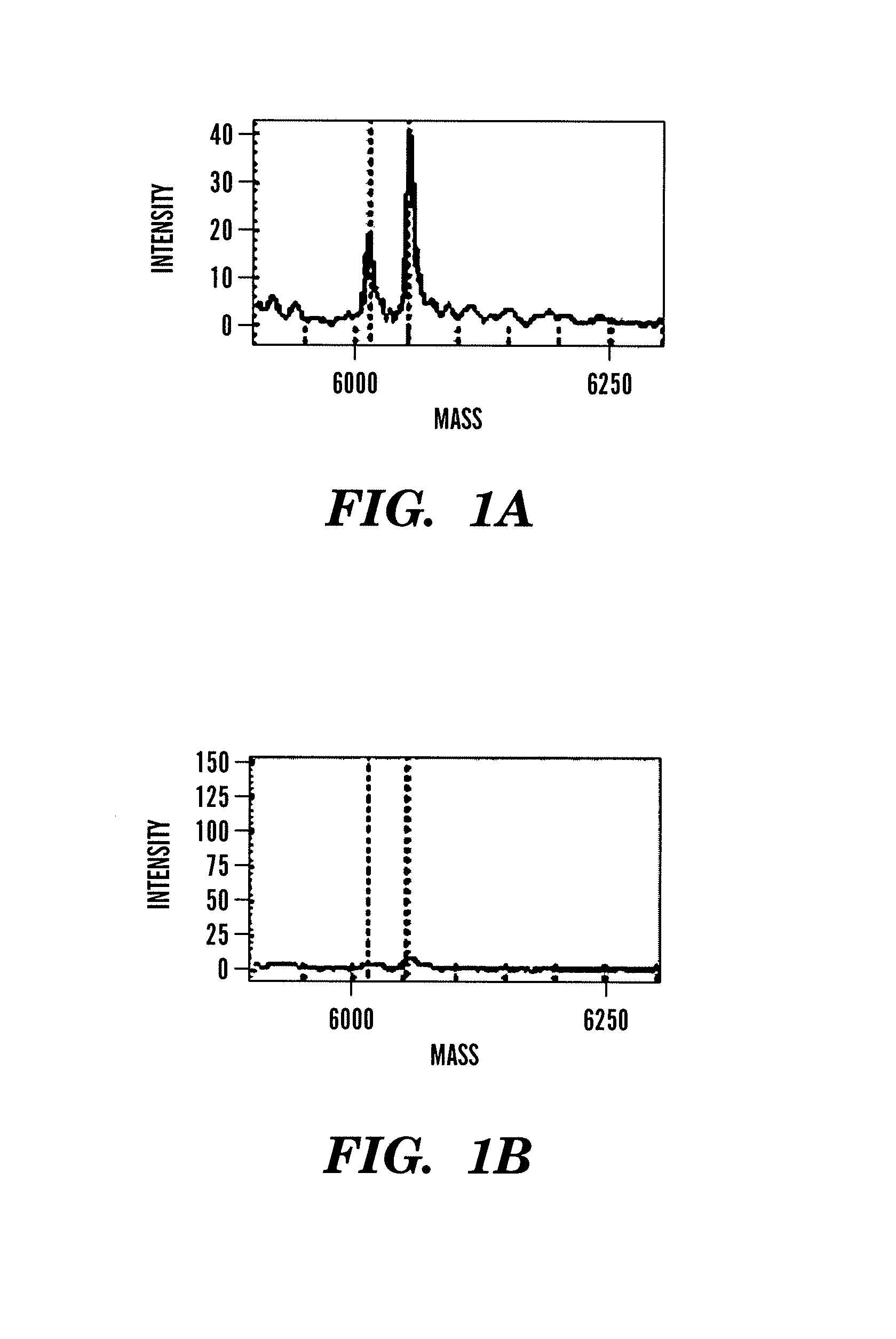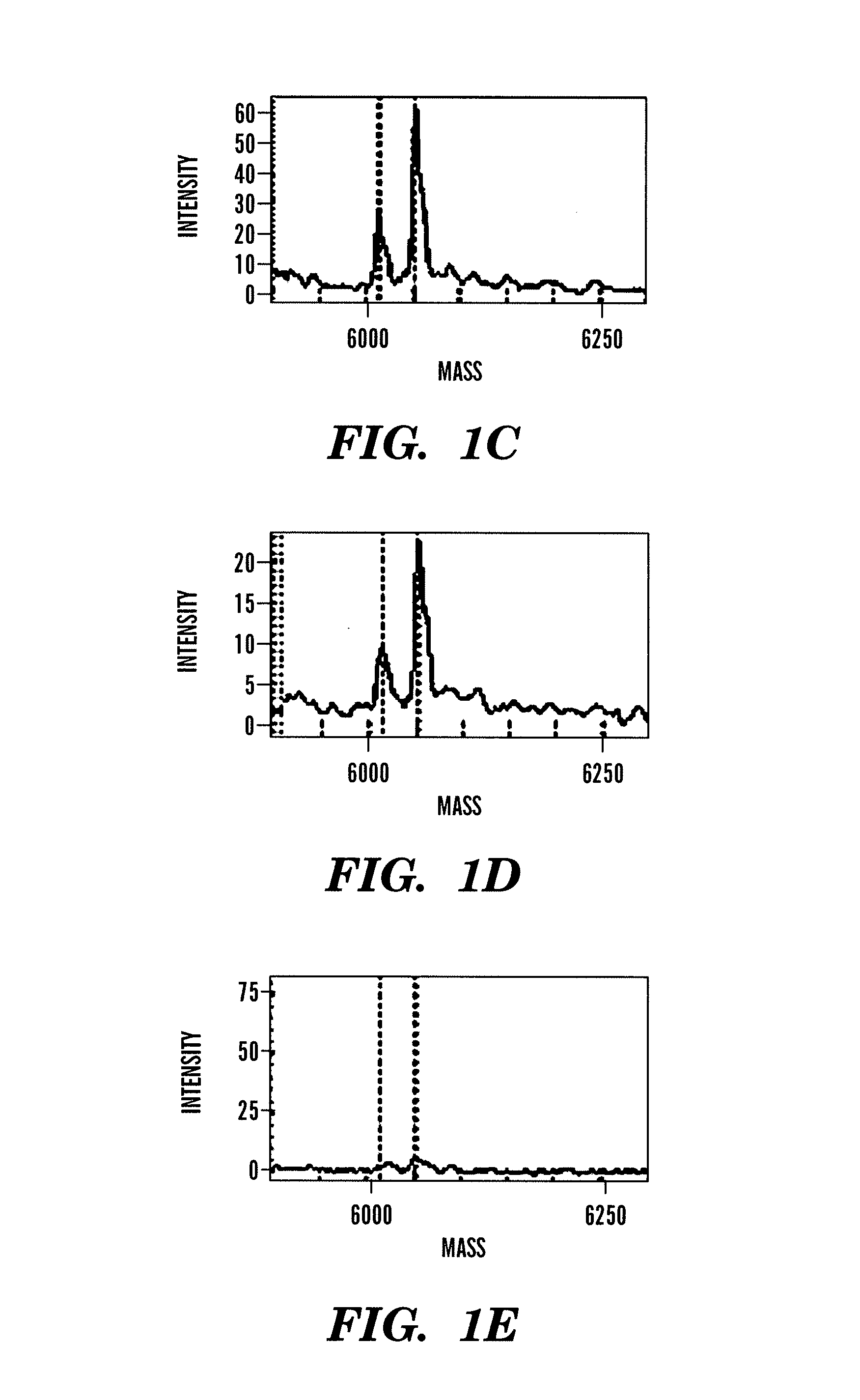Method for detecting and quantifying rare mutations/polymorphisms
- Summary
- Abstract
- Description
- Claims
- Application Information
AI Technical Summary
Benefits of technology
Problems solved by technology
Method used
Image
Examples
example 1
[0071]Detection and quantification of rare mutation. Three DNA sequences including wildtype (wt), mutant (mut) and a competitor or the standard were used in this experiment. The sequences were:
[0072]
WILDTYPE:[SEQ ID NO.: 6]5′GTGGCAGATCTCTTCATGGTCTTCGGTGGCTTCACCACCAACCTCTACACCTCTCTCCATGGGTACTTCGTCTTTGG-3′MUTANT:[SEQ ID NO.: 7]5′GTGGCAGATCTCTTCATGGTCTTCGGTGGCTTCACCACCATCCTCTACACCTCTCTCCATGGGTACTTCGTCTTTGG-3′COMPETITOR:[SEQ ID NO.: 8]5′GTGGCAGATCTCTTCATGGTCTTCGGTGGCTTCACCACCATGCTCTACACCTCTCTCCATGGGTACTTCGTCTTTGG-3′
[0073]The competitor was used as an internal standard for mut DNA quantification. Wt DNA is used as the background DNA which exist at a much higher concentration than mut DNA. The PCR primer sequences are: 5′ACGTTGGATGTGGCAGATCTCTTCATGGTC-3′ [SEQ ID NO.: 9] and 5′ACGTTGGATGCCAAAGACGAAGTACCCATG-3′ [SEQ ID NO.: 10]. The extension primer sequence was 5′CGGTGGCTTCACCACCA-3′ [SEQ ID NO.: 11]. The extension ddNTP / dNTP mixture was dTTP / ddGTP / ddCTP.
[0074]Different mixtures of the thr...
example 2
[0075]Matrix-assisted laser desorption ionization-time of flight mass spectrometry (MALDI-TOF MS) was adapted for quantitative gene expression analysis [1]. This technique, dubbed as real competitive PCR, combines competitive PCR, primer extension reaction and MALDI-TOF MS. After isolation of RNA and reverse transcription, cDNA is spiked with a synthetic oligonucleotide (the competitor) with an identical sequence except one single base roughly in the middle of the sequence to the cDNA of interest. The competitor and the cDNA of interest are co-amplified by PCR. Excess dNTPs are removed by shrimp alkaline phosphatase treatment after PCR. Then, a base extension reaction is carried out with an extension primer, a combination of three different ddNTPs and one dNTP and a ThermoSequenase. The base extension primer hybridizes right next to the mutation site and either one or two bases are added for the competitor and the cDNA, yielding two oligonucleotide products with different molecular ...
example 3
[0081]In the third example, we tested allele-specific expression of the ABCD-1 gene (located on the X chromosome) involved in X-linked adrenoleukodystrophy (XALD). The manifestation of symptoms in XALD carriers was previously shown to be associated with a higher degree of non-random X chromosome inactivation [3]. A non-random X chromosome inactivation is likely to cause a preferential expression down-regulation of one of the ABCD-1 allele. If the wildtype allele is inactivated, the mutant allele will be predominantly expressed. Thus, the individual might show symptoms similar to a homozygous mutant. X chromosome inactivation studies can only provide a genome-wide, indirect picture while direct allele-specific gene expression can provide the direct link between gene expression and disease manifestation. We thus carried out allele-specific gene expression for three carriers with three different ABCD-1 mutations (S108W, S213C and Q672X). The S108W carrier showed predominant (>99%) muta...
PUM
| Property | Measurement | Unit |
|---|---|---|
| molecular weights | aaaaa | aaaaa |
| molecular weight | aaaaa | aaaaa |
| molecular weight | aaaaa | aaaaa |
Abstract
Description
Claims
Application Information
 Login to View More
Login to View More - R&D
- Intellectual Property
- Life Sciences
- Materials
- Tech Scout
- Unparalleled Data Quality
- Higher Quality Content
- 60% Fewer Hallucinations
Browse by: Latest US Patents, China's latest patents, Technical Efficacy Thesaurus, Application Domain, Technology Topic, Popular Technical Reports.
© 2025 PatSnap. All rights reserved.Legal|Privacy policy|Modern Slavery Act Transparency Statement|Sitemap|About US| Contact US: help@patsnap.com



